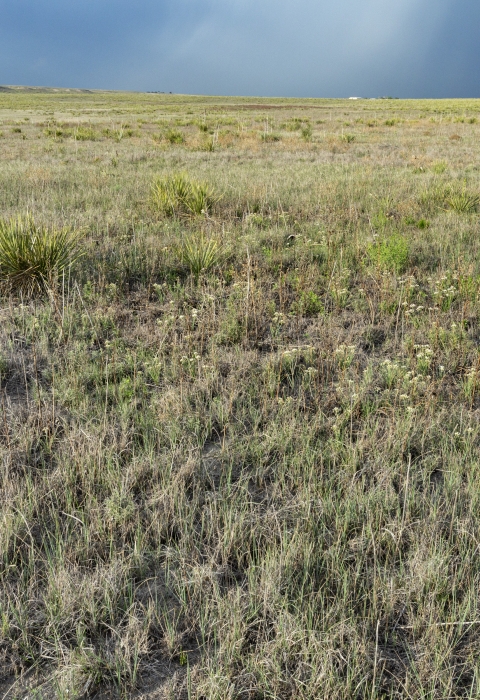Seasons of Wildlife
During the spring, summer and fall neotropical migrant birds can be seen throughout the refuge.
In fall and winter, bald and golden eagle are frequently seen on the refuge.
Featured Species
Visitors can see neotropical migrant birds that pass through the refuge each spring and fall with many remaining to nest. More than 300 species of these migratory birds have been recorded on the refuge, including warblers, flycatchers, tanagers, orioles, sparrows, and numerous others that provide a song in the trees. The refuge’s riparian riparian
Definition of riparian habitat or riparian areas.
Learn more about riparian areas, trees and grasses next to the dry lakebed are an important source of food and shelter to these small, colorful visitors.
The refuge also contains some of the best remaining short grass prairie in the United States, including 175 acres designated a National Natural Landmark National Natural Landmark
The National Natural Landmarks Program preserves sites illustrating the geological and ecological character of the United States. The program aims to enhance the scientific and educational value of the preserved sites, strengthen public appreciation of natural history and foster a greater concern for the conservation of the nation’s natural heritage. The program was established in 1962 by administrative action under the authority of the Historic Sites Act of 1935. The first National Natural Landmarks were designated in 1963. Today, there are more than 600 National Natural Landmarks in 48 states, American Samoa, Guam, Puerto Rico and the U.S. Virgin Islands.
Learn more about National Natural Landmark . Short grass prairie ecosystems were historically maintained by American bison. With the bison gone, this ecosystem is now maintained on the refuge by cattle grazing. Grassland prairies in the United States have nearly disappeared, making the refuge’s protection efforts especially important. A variety of species depend on this endangered ecosystem, including black-tailed prairie dogs, burrowing owls, Cassin’s and lark sparrows, and bald and golden eagles.
The diversity of plants found within the shortgrass prairie also provide important habitat for pollinators like bees and butterflies. The shortgrass prairie also offers excellent opportunities to enjoy Texas’ colorful wildflowers or watch raptors gliding overhead in search of prey.
